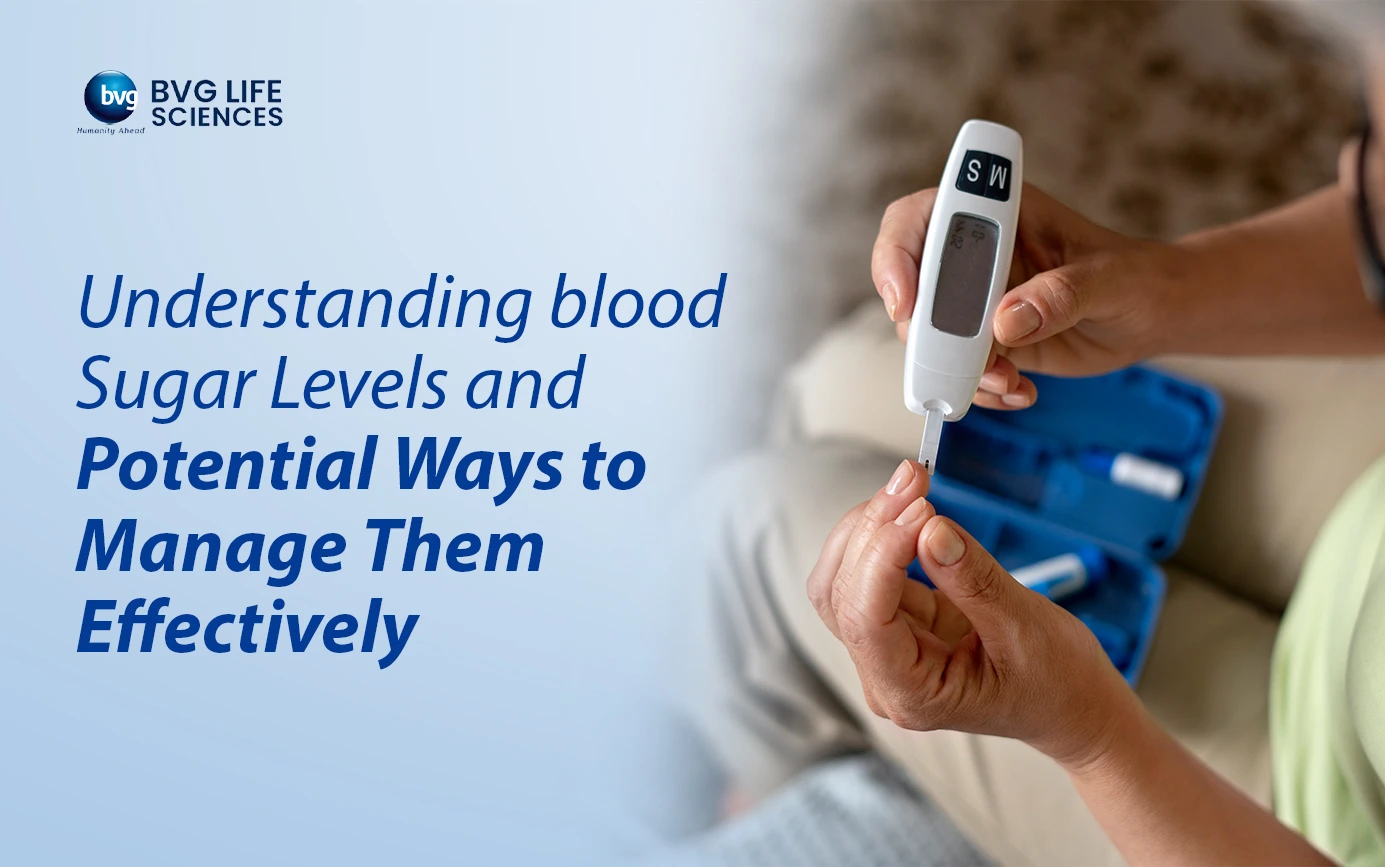Managing balanced blood sugar levels is important for overall health. Both high and low blood sugar levels can have serious consequences if left unmanaged. Understanding what level of blood sugar is dangerous and how to bring it back to a healthy range is essential for everyone, especially those with fluctuating glucose levels.
Understanding Blood Sugar Levels
Blood sugar, or glucose, is the major source of energy for the overall body. It generally comes from the food we eat and is controlled by insulin, a hormone produced by the pancreas. Here is a general breakdown of blood sugar levels:
- Normal Blood Sugar Levels: 70-99 mg/dL (fasting) and less than 140 mg/dL (after meals)
- Prediabetes Levels: 100-125 mg/dL (fasting) and 140-199 mg/dL (after meals)
- Diabetes Levels: 126 mg/dL or higher (fasting) and 200 mg/dL or higher (after meals)
- Hypoglycemia (Low Blood Sugar Level): Below 70 mg/dL
- Hyperglycemia (High Blood Sugar Level): Above 180 mg/dL
What Level of Blood Sugar Is Dangerous?
Extreme fluctuations in blood sugar levels can be harmful. Here’s when blood sugar levels become dangerous:
Dangerously High Blood Sugar (Severe Hyperglycemia)
When blood sugar levels rise above 300 mg/dL, it can lead to serious complications, including:
- Diabetic Ketoacidosis (DKA): A condition where the body starts breaking down fat for energy, releasing harmful ketones into the bloodstream. Symptoms include excessive thirst, nausea, vomiting, and confusion.
- Hyperosmolar Hyperglycemic State (HHS): Extremely high blood sugar levels (above 600 mg/dL) can lead to severe dehydration and coma.
Dangerously Low Blood Sugar (Severe Hypoglycemia)
When blood sugar levels drop below 54 mg/dL, the risk of:
- Loss of consciousness
- Seizures
- Coma In severe cases, untreated hypoglycemia can be life-threatening.
Ways to Manage Blood Sugar Levels Efficiently
If your blood sugar is dangerously high, you can take immediate steps to lower it:
1. Increase Water Intake
Drinking water helps flush out excess glucose through urine and prevents dehydration.
2. Engage in Physical Activity
Light exercises like walking can help lower blood sugar levels. However, if levels are above 300 mg/dL, consult a doctor before exercising.
3. Manage Carbohydrate Intake
Reducing carbohydrate consumption can help stabilize blood sugar levels. Focus on fiber-rich foods such as vegetables, whole grains, and legumes.
4. Opt for Ayurvedic Support
Certain herbs have been traditionally used to support balanced blood sugar levels. The Diabetes Care Kit from BVG Life Sciences includes ingredients that provide support in glucose regulation.
Sucrea Tablet:
- Jamun Beej: Aids in the breakdown of carbohydrates into energy and regulates blood sugar levels.
- Karela: Supports in regulation of blood sugar levels
- Methi: Supports in improving the sugar level status by several mechanisms.
- Madhunashini: Helps in supporting blood sugar levels and managing sugar cravings.
- Neem: Helps support blood sugar regulation by improving blood circulation.
- Vijaysar: May promote glucose uptake, possibly helping to reduce blood glucose levels.
- Amlaki: May help maintain healthy blood sugar levels.
- Haldi: Curcumin, an active component of haldi, may help manage blood sugar levels and related complications.
Rasapachak Vati:
- Indrayava (Holarrhena antidysenterica): Assists in managing blood sugar levels and related issues.
- Patol (Trichosanthes dioica): Assists in lowering blood sugar levels and may have positive effect on diabetes.
- Kutaki (Picrorhiza kurroa): May help increase insulin production and assist with diabetes.
Order the Diabetes Care Kit now to naturally manage your sugar levels and enhance your overall health.
How to Prevent Blood Sugar Spikes
- Follow an Ayurvedic Dietary Approach: Incorporate foods with natural blood sugar-balancing properties.
- Practice Portion Control: Overeating can lead to blood sugar spikes.
- Increase Fiber Intake: Fiber slows down glucose absorption, preventing sudden spikes.
- Maintain a Consistent Meal Schedule: Skipping meals can cause fluctuations in blood sugar levels.
- Stay Active: Regular physical activity helps the body use glucose efficiently.
Monitor Blood Sugar Levels: Keeping track of blood sugar levels can help in timely intervention.
Conclusion
Understanding what level of blood sugar is dangerous and how to maintain a balanced level is crucial for long-term well-being. Small lifestyle changes, combined with natural support, can help maintain glucose stability and overall health. Stay mindful of your diet, exercise regularly, and monitor your levels to lead a healthier life.
FAQs
What are the symptoms of dangerously high blood sugar?
Ans: Excessive thirst, frequent urination, fatigue, blurred vision, and nausea are common signs.
Can blood sugar be lowered naturally?
Ans: Yes, lifestyle changes, a balanced diet, regular exercise, and Ayurvedic support can help maintain healthy blood sugar levels.
Is 200 mg/dL blood sugar level dangerous?
Ans: A reading of 200 mg/dL after meals indicates hyperglycemia, which should be managed to prevent complications.
What should I eat if my blood sugar is high?
Ans: Focus on high-fiber foods, lean proteins, and foods rich in antioxidants.
How can I avoid blood sugar fluctuations?
Ans: By maintaining a healthy diet, staying physically active, and monitoring glucose levels regularly.




1 Comment
What’s up, this weekend is good in support of me, for the reason that this moment i am reading this great informative piece of writing here at my home.
Zain recharge